Mountain Summit Heidiland
Piz Sardona


Description
The mountain with the vibrant name Piz Sardona is located in the border area of the cantons of St.Gallen, Glarus and Grisons. Verrucano rock lies directly on the thin layer of Lochsite limestone and the flysch rock below. In the direction of the Calfeisen valley and Flims there are glaciers that have lost considerable length and volume in recent years. In front of the glaciers, beautiful moraines, polished rocks and gravel fields can be seen. The summit can be climbed from various starting points. A moderately difficult alpine tour starts from the SAC Sardona hut. The ascent across the Sardona glacier with a short climb below the summit takes about 3.5 hours (900 metres of elevation gain) from the hut.
- Getting here
Responsible for this content: Graubünden Ferien .
- By post date
- By hike date
- Last Comment
- Switzerland
Hike to Piz Segnas (3099 m) and Piz Sardona (3056 m)
- Related reports (110)
- In the vicinity
Navigate to myswitzerland.com
Destinations
Your swiss holiday time.
Holiday destinations
- Summer holiday destinations
- Winter sports & ski resorts
- Family destinations
Attractions
- Top attractions
- UNESCO World Heritage sites / biospheres
- Travel by train, bus or boat
- Top museums
- Swiss Parks
- Scenic nature
Experiences
Additional content about subnavigation experiences.
- Family excursions
- Food & Wine
- Group excursions
- Guided tours
Summer & Autumn
- Bicycle & Mountain bike
- Adventure & Sports Summer
- Zoo & animal experiences
- Ski and snowboard
- Cross-country skiing
- Snowshoe and winter hiking
- Tobogganing
- Winter excursions
- Christmas in Switzerland
Cities & culture
- Parks, Gardens and Squares
- Architecture
Experience Tour
- Car, motorcycle - Grand Tour
- Train, bus, boat – Grand Train Tour
- Mountain excursions
Accommodation
- Typically Swiss Hotels
- Wellness & Spa
- Family Hotels
- Bike Hotels
- Boutique Hotels
- Inspiring Meeting Hotels
- Swiss Historic Hotels
- Luxury hotels
- Winter sports hotels
Other types of accommodation
- On the farm
- Bed and Breakfast
- Mountains huts
- Group accommodation
Transport & Stay
- Travel to Switzerland
- Barrier-free travel
- Tickets public transport
- Service & support
- Money and shopping
About Switzerland
- General facts
- Custom and tradition
- History of Switzerland
- The Swiss Art and Culture Scene
- Health Travel
- Sustainability
Weather & Climate
- Climate in Switzerland
- Snow Report
- Water and pool temperatures
- City offers
- Touring offers
- Wellness offers
- Nature and outdoor offers
- Offers for families
Where are you from?
- België (Nederlands)
- Belgique (Français)
- Deutschland
- Netherlands
- Russia (Россия)
- Schweiz (Deutsch)
- Suisse (Français)
- Svizzera (Italiano)
- Switzerland (English)
- United Kingdom
- Canada (English)
- Canada (Français)
- China 中文简体
- China 中文繁体
- Gulf countries العربية
- Japan 日本
- Korea 한국어
- United Arab Emirates
- New Zealand
- International
Language, region and important links
- Slovenština
Service Navigation
- Help & Contact
Tectonic Arena Sardona
UNESCO World Heritage in Switzerland Phone +41 (0)31 544 31 15 ourheritage.ch
Knife-sharp and yellow: The seldom line along the rock face around the Piz Sardona marks the Glarus overthrust - a phenomenon of world interest. Here, older rock strata have edged their way above younger rocks.
Few places illustrate the history of the Alps as impressively as the UNESCO World Heritage Site between the Murgsee lake, Pizol and Martin's Hole near Elm. Unique formations bear witness to the awesome power of nature when the continents of Africa and Europe collided. Clearly visible from a great distance: the distinctive notch around the Piz Sardona separates the 250-million-year-old Verrucano rock from the 35 to 50 million years “young” Flysch rock. Extraordinary is that ancient stone formations overlie those that are millions of years younger - which was long an enigma for geologists, and a fact so unique that led it to the addition of the Swiss Tectonic Arena Sardona on the UNESCO World Heritage list in 2008. The Glarus overthrust, particularly attractive to discover around the Martin’s Hole, forms the heart of the 300 square meter Sarganserland- Walensee-Glarnerland Geopark.
Excursion tip: “Expedition Tschinglen”
World Heritage Experience Switzerland
General information
Booking information, discover the surroundings.
UNESCO World Heritage in Switzerland Switzerland
Phone +41 (0)31 544 31 15 ourheritage.ch Show Route
IG Tektonikarena Sardona Städtchenstrasse 45 7320 Sargans Switzerland
Phone +41 (0)81 723 59 20 [email protected] unesco-sardona.ch
UNESCO World Heritage in Switzerland Phone +41 (0)31 544 31 15 ourheritage.ch Show Route
IG Tektonikarena Sardona Städtchenstrasse 45 7320 Sargans Phone +41 (0)81 723 59 20 unesco-sardona.ch
Book online
Advertisement
Travel information: swiss tectonic arena sardona.
- Hotel booking
- Holiday rentals
- Group houses groups.swiss
- Swiss Hostels
- Bed and breakfast
- Railway timetable
Local Information
- Restaurants
Winter sports
- Swiss Ski School
- Swisstravelcenter Hiking Maps
- Swisstravelcenter Mountainbike Maps
- Swisstopo Hiking Maps
Current Offers
Flims kulinarik-trail mountain and view, bad ragaz culinary hike "5-lakes picnic pizol", flims discover medicinal plants and wild herbs, bad ragaz culinary tour graubünden rhine valley (e-bike), flumserberg discovery set play experience lake walen, flumserberg culinary hike "connoisseur route flumserberg", flims on the road with the gamekeeper, flumserberg walk with a raclette-backpack on the flumserberg, flims four mysterious lakes, flims forest and winter culinary trail groups.
- Tourensuche
- Tourenplaner
- Reiseführer
- Ausflugsziele
- Essen & Trinken
- Unterkünfte
- Klettergebiete
- Aktuelle Bedingungen
- Lawinenlage
- Veranstaltungen
- Geschichten
- Bücher & Karten
- Einstellungen
Piz Sardona

Koordinaten
Empfehlungen in der nähe.
Nach der Übernachtung inmitten des Weltnaturerbes Tektonikarena Sardona durch unberührte Gebirgslandschaften zum Foopass, begleitet von der Glarner ...
Diese Tour bietet einen einmaligen Einblick ins UNESCO-Weltnaturerbe Tektonikarena Sardona. Im kaum bekannten Grenzgebiet der Kantone St.
Am vierten Tag kannst du dich erholen, eine kurze Etappe ins Glarnerland erwartet dich.
Diese anspruchsvolle Berg- und Passwanderung führt von Elm im Kanton Glarus über den Segnespass hinüber nach Flims im Kanton Graubünden
Bunte Blütenpracht zwischen schroffen Bergen
Interessante Punkte in der Nähe
- Grossi Schiben
- Gebiet Sardona-Segnas-Gruppe
- Sardonagletscher
- Chli Schiben
- Verrucano am Alpichopf
Fragen & Antworten
Hier kannst du gezielt Fragen an den Autor stellen.
Bewertungen
Gib die erste Bewertung ab und hilf damit anderen.

Fotos von anderen
- Bilder einblenden Bilder ausblenden
- 6 Touren in der Umgebung
Ausflugsziele und Freizeittipps in der Region
What do you know about the formation of our mountains?
Experience the modern day perspective on the formation of the alps – a huge crumple zone, formed by the collision of europe and africa..
The mountains shape the landscape of Switzerland. Yet we know very little about their origin. Mountains and valleys were created over almost unimaginably long periods of time. In them we discover traces of foreign, long since past deserts and seas. Fossils tell us about the former biodiversity. Learn more about the formation of the Alps and the World Heritage Sardona.
flyers and brochures school science hike descriptions

Why World Heritage?
To distinguish unique natural resources that are worth preserving for all of humanity. they should be passed on unscathed to our children and grandchildren, this is at the core of the world heritage idea..
In July 2008, UNESCO, the United Nations Educational, Scientific and Cultural Organization, included the Sardona World Heritage on the World Heritage List with the following explanation:
“The worldwide unique visibility of mountain building, the exemplary scientific history and the ongoing importance for geological research merit the inclusion as a World Heritage Site”. A great award – but also an obligation for the three participating cantons and the World Heritage communities to take lasting care of this situation.
detailed information

Formation of the Alps – understanding mountains
During the collision between the african and european continental plates, processes that led to the formation of the alps occurred deep in the interior of the earth and on the earth’s surface..
100 million years ago, the African continental plate began to move towards the European plate at around 2 centimetres per year. Slowly a huge crumple zone developed underground, and the formation of the Alps began. The European plate deflected downwards and slowly sank into the earth’s mantle. Parts of the plates were scraped off and stacked on top of each other as huge packages of rock. At the same time, erosion, valleys and mountains appeared. The race between crumpling, stacking and erosion in the Alps still continues today – the formation of the Alps is not yet complete!
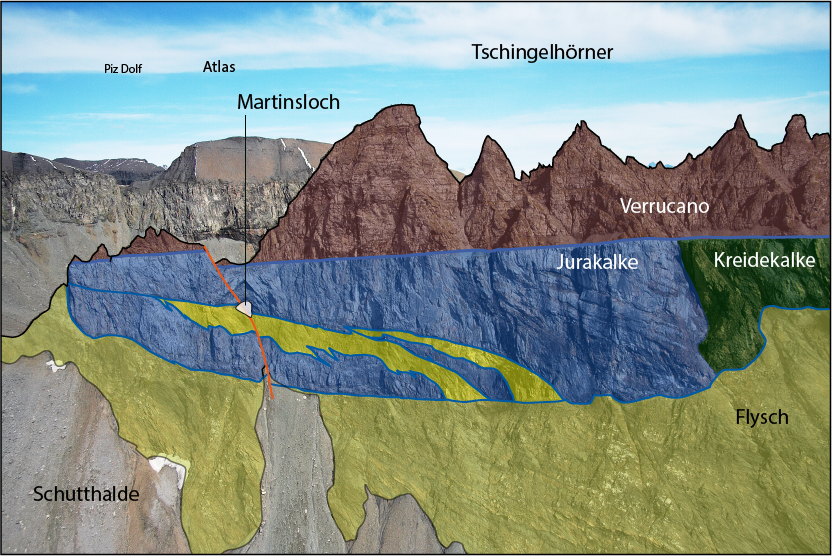
The folding of the Alps does not exist!
The term “alpine folding” is a relic of the past. in fact, the alps were mainly formed by the overthrust of rock packages..
The overthrust of rock packages occurs at the borders of huge areas. These are – with the exception of the World Heritage Sardona! – not recognizable on the surface of the earth. The sometimes spectacular rock folds are clearly visible in many places in the Sardona World Heritage and were surprisingly formed as a result of the large overthrust!
Overthrust and folding always go hand in hand. Both processes occur deep within the earth. Through gradual rise and erosion they reach the earth’s surface.
Piz Sardona and the Glarus Thrust
The “magic line” of the glarus thrust is clearly visible on the peaks all around the 3056-metre-high piz sardona..
This line represents a huge thrust surface, which was once formed deep within the earth. The rocks below and above this area are completely different, with an age difference of up to 200 million years! But that’s not all: the older rock is on top – the mountains are upside down around here!
In some places you get the feeling of being in the middle of an arena. That is why the Tectonic Arena Sardona around Piz Sardona is so unique. In addition, the rock layers here are particularly clear evidence of how the mountains were formed.
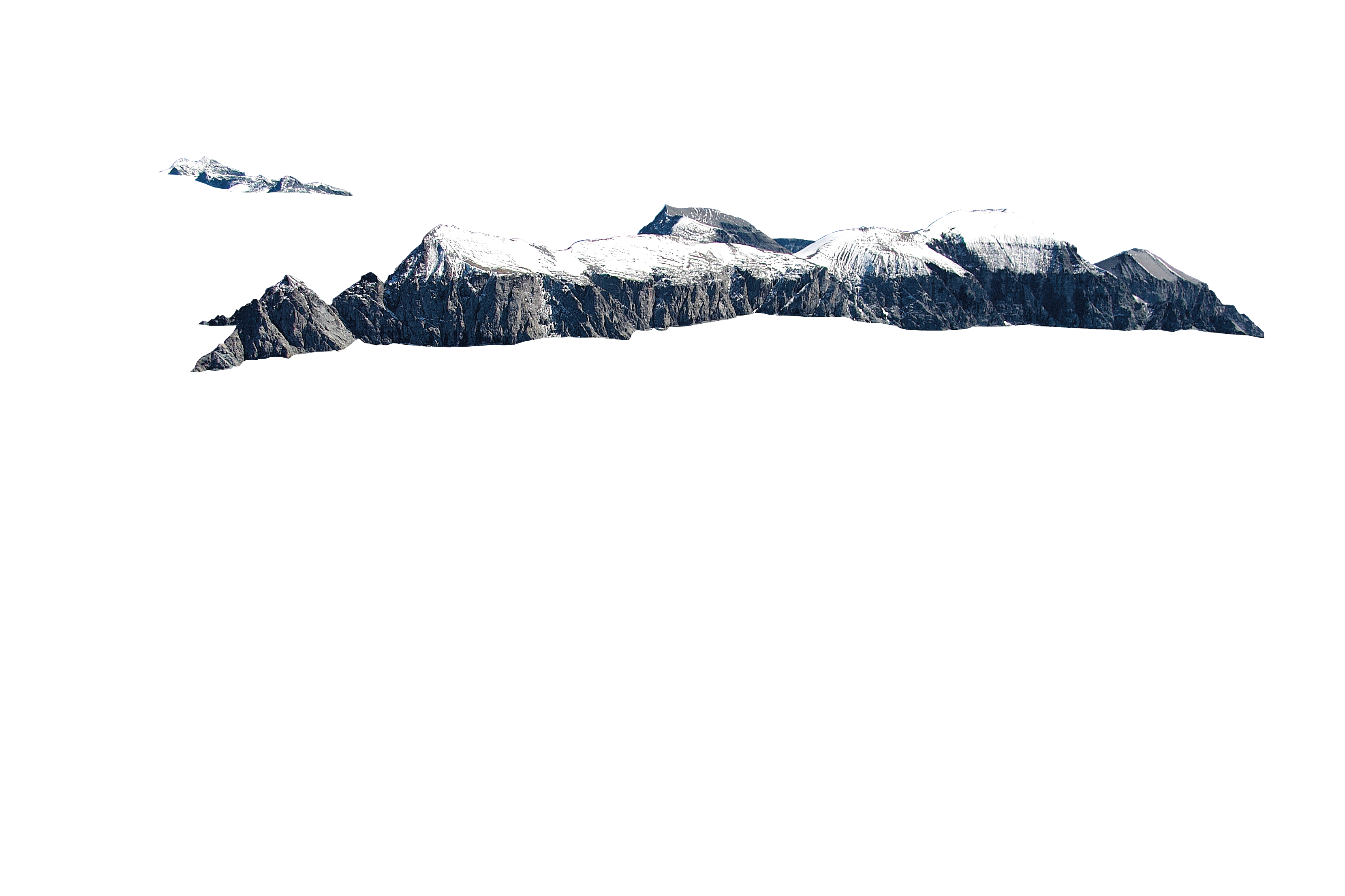
Diverse types of rock – the building blocks of the mountains
The wealth and variety of colourful rocks on the surface of the earth are enormous in the tectonic arena sardona..
The oldest rocks of the region can be found around Vättis SG. The gneisses there are over 300 million years old. The tips of the Tschingelhörner consist of 250-300 million year old Verrucano rock, which was deposited a long time ago in a desert climate at the equator.
The Churfirsten and the Calanda consist of limestone, which comes from a sea deposit. The huge rock faces consist almost exclusively of ancient microorganisms that accumulated at the bottom of the sea over millions of years.
Flims rockslide – how a mountain crumbles
Rockslides move several million cubic metres of rock in minutes and thus contribute to the formation of the alps..
The Flims rockslide is the largest rock avalanche in the Alps. An estimated 9450 years ago, around 10 cubic kilometres of rock thundered down into the valley. We do not know exactly what caused the rockslide, but the effects must have been felt far into the lowlands. In addition to the Flims rockslide, there are many other forms of erosion in the region, such as the removal of rock material by glaciers.
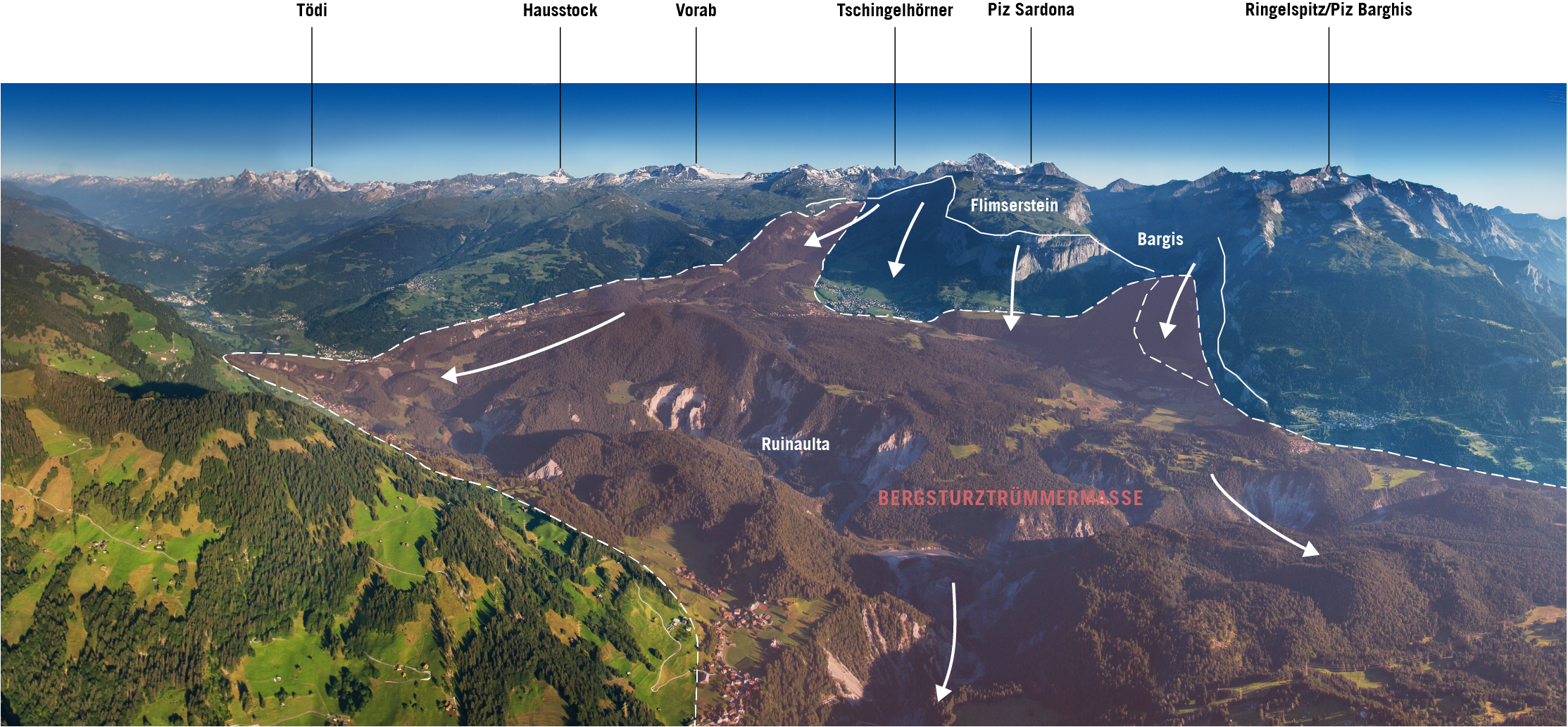
Geotopes – diverse landscapes and habitats
The sardona world heritage region offers an unusually high concentration of witnesses to earth’s history worthy of protection,so-called geotopes, in a pristine landscape..
The various rock substrates enabled the diverse alpine flora and fauna as well as raised bogs and alluvial plains to develop. Animals as different as the ibex and the bearded vulture find their home in the Alps. Some areas have been registered in inventories of national importance.

Geohistory – when scientists argue
Scientists have been arguing about the formation of mountain ranges in the world heritage sardona for over 200 years..
The emergence of mountains and mountain ranges is a topic that, even more than other areas of science, is characterised by a wide range of opinions and controversial interpretations. Geoscientists were able to find important puzzle pieces on the formation of the Alps in the Sardona World Heritage. This led to fundamental insights into the formation of mountain ranges on earth.
The importance of the area for geological research continues. Even to this day, scientists are conducting research in the region in order to gain an even better understanding of the formation of mountains.
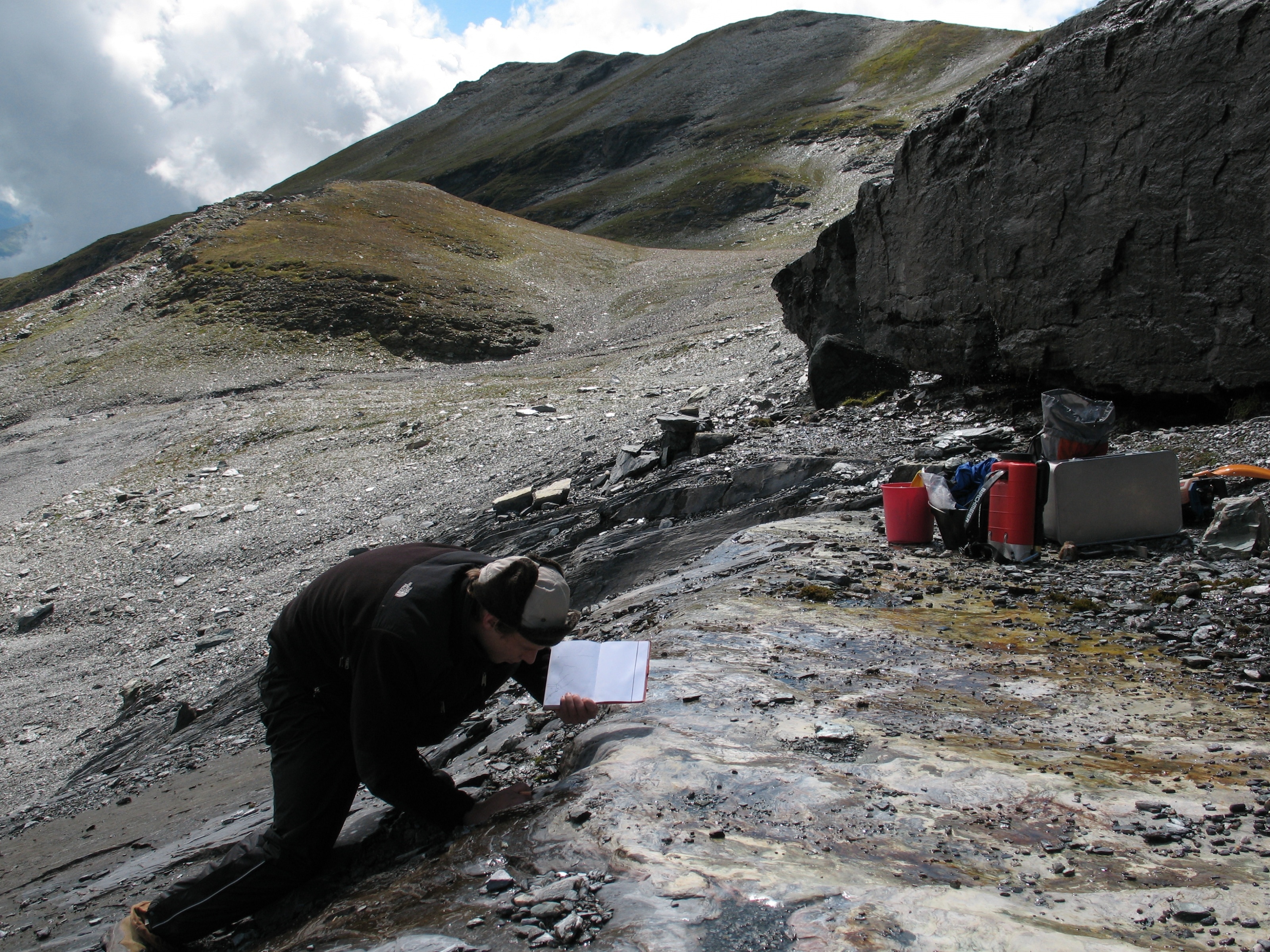
Contemporary research questions
The fact that the clearly visible “magic line” is a huge thrust surface of rock packages can be considered a scientifically confirmed thesis these days. for a while everything appeared to be clear that way..
However, as is so often the case in the sciences, the younger generations of researchers are once again questioning everything, are curious and see more question marks than certainties. This is what happens again and again in the Sardona World Heritage Site!
Today’s questions revolve around the mechanisms of these enormous processes of mountain formation. How is such a process mechanically possible? What types of deformation took place? What role did deep groundwater play? When and how quickly did the movements take place?
Geological research is not running out of things to study!

- Trip Reports
- Areas & Ranges
- Huts & Campgrounds
- Logistical Centers
- Fact Sheets
- Custom Objects
- Plans & Partners

- Additional Parents
- Images (16)
- Climber's Log Entries (2)
- Comments (9)
- Additions & Corrections
- Getting There
- When To Climb
- Mountain Conditions
View Piz Segnas Image Gallery - 16 Images
- Nearby Mountains & Rocks
- Interactive Map
- Mountains & Rocks in Switzerland
Parents refers to a larger category under which an object falls. For example, theAconcagua mountain page has the 'Aconcagua Group' and the 'Seven Summits' asparents and is a parent itself to many routes, photos, and Trip Reports.
- Bifertenstock 3419m
- Piz Urlaun 3359m
- Windgaellen
- Hausstock 3158m
- Gross Ruchen
- Piz Sardona 3055m
- Gemsfairenstock
- Muttenbergen
- Glärnisch - Vrenelisgärtli
- Gross Schijen
- Schächentaler Windgällen
You need to login in order to vote!
Don't have an account.
- Rating available
- Suggested routes for you
- People who climb the same things as you
- Comments Available
- Create Albums

43 Facts About Bratsk
Written by Elvira Llamas
Modified & Updated: 29 May 2024
Reviewed by Jessica Corbett
- Industrial Center Facts
- Industrialization Facts
- Russia Facts
- Russian Architecture Facts
- Siberia Facts
- Tourism Facts
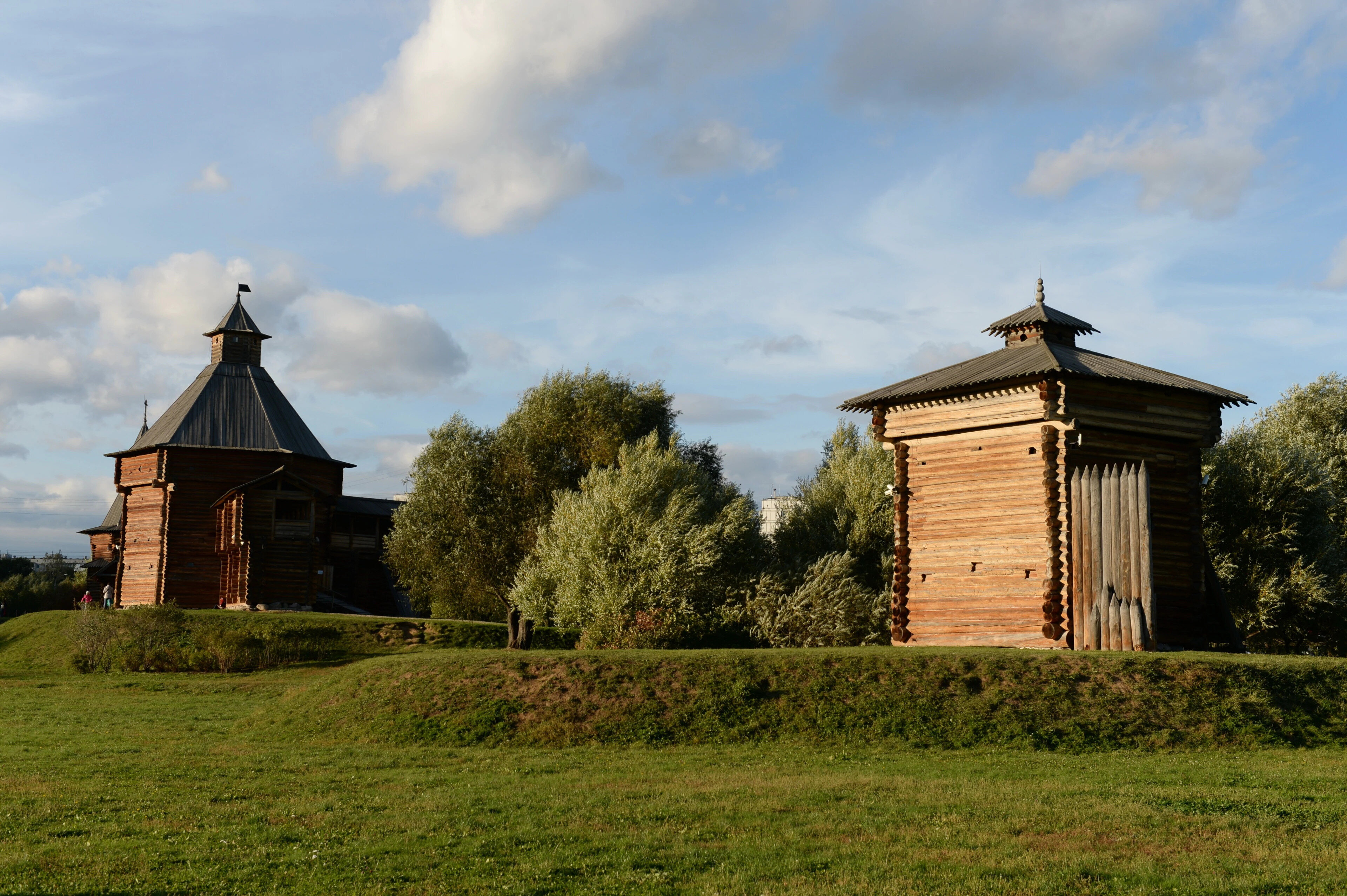
Bratsk, a city located in the Irkutsk Oblast region of Russia, is a hidden gem worth exploring. With a rich history and a vibrant culture, Bratsk offers a unique experience to its visitors. From breathtaking natural landscapes to architectural wonders, there is something for everyone in this enchanting city.
In this article, we will uncover 43 fascinating facts about Bratsk that will pique your curiosity and make you want to pack your bags and embark on an adventure. Whether you are a history buff, nature enthusiast, or someone who appreciates art and culture , Bratsk has it all. So, let’s dive into this incredible city and discover what makes it so special!
Key Takeaways:
- Bratsk, a city in Russia, boasts a rich history, stunning landscapes, and a vibrant community, offering a unique experience for residents and visitors alike.
- With its impressive hydroelectric power station, beautiful natural reserves, and diverse cultural scene, Bratsk is a city poised for promising growth and development.
Bratsk is a city in Irkutsk Oblast, Russia.
Located in Siberia, Bratsk is situated on the Angara River and is known for its breathtaking natural landscapes.
The city of Bratsk was founded on August 26, 1947.
It was established as a residential settlement for the workers of the Bratsk hydroelectric power station.
Bratsk is home to one of the largest hydroelectric power plants in the world.
The Bratsk Hydroelectric Power Station has a capacity of 4,500 MW and plays a significant role in Russia’s energy production.
The population of Bratsk is approximately 246,000 people.
It is the third-largest city in Irkutsk Oblast, after Irkutsk and Angarsk.

The name “Bratsk” is derived from the word “brothers”.
It symbolizes the unity and cooperation of the workers who contributed to the construction of the city.
Bratsk experiences a continental climate with long, cold winters and short, warm summers.
The average temperature in January is around -19°C (-2°F), while in July , it reaches an average of 18°C (64°F).
The Bratsk Reservoir, created by the damming of the Angara River, is one of the largest artificial lakes in the world.
It covers an area of 5,470 square kilometers (2,110 square miles ) and provides opportunities for various water activities.
Bratsk is a major transportation hub in Siberia.
It has a well-developed railway system and is connected to other cities in the region through an extensive network of roads.
The city of Bratsk is known for its vibrant cultural scene.
It is home to several theaters, museums, and art galleries that showcase the rich history and traditions of the region.
Bratsk is surrounded by picturesque natural landscapes, including dense forests, mountains, and rivers.
The area offers opportunities for outdoor activities such as hiking, fishing , and wildlife watching.
The Bratsk Dam, which forms the Bratsk Reservoir, was completed in 1967.
It stands at a height of 124 meters (407 feet) and is an impressive engineering feat.
The construction of the Bratsk Hydroelectric Power Station required the relocation of several villages and towns.
Efforts were made to ensure the smooth transition and well-being of the affected residents.
Bratsk has a diverse economy, with industries including energy, metallurgy, forestry, and agriculture.
The city’s development is closely tied to the Bratsk Hydroelectric Power Station and the surrounding natural resources.
Bratsk is home to several educational institutions, including universities, colleges, and vocational schools.
It serves as an educational center for the region, attracting students from different parts of Siberia .
The people of Bratsk are known for their warm hospitality and welcoming nature.
Visitors to the city often praise the friendly atmosphere and genuine kindness of the locals.
Bratsk has a rich cultural heritage, with influences from various ethnic groups living in the area.
The city celebrates traditional festivals, music, and dance, reflecting the diversity of its population .
The Bratsk Fortress is an important historical landmark in the city.
It dates back to the 17th century and serves as a reminder of Bratsk’s significant role in the region’s history.
Bratsk is known for its delicious cuisine, which features traditional Siberian dishes as well as Russian favorites.
Visitors can enjoy hearty soups, smoked fish , and locally sourced berries and mushrooms.
The Bratsk Museum of Local Lore showcases the history, culture, and natural wonders of the region.
It is a must-visit for those interested in learning more about Bratsk and its surroundings.
Bratsk has a well-developed sports infrastructure and supports various athletic activities.
The city has produced many talented athletes who have competed at national and international levels.
Bratsk is surrounded by beautiful nature reserves and national parks.
These protected areas are home to a wide range of flora and fauna, offering breathtaking sights for nature enthusiasts.
The Bratskaya street, one of the main streets in the city, is lined with shops, restaurants, and cafes.
It is a popular spot for locals and tourists to stroll, shop, and enjoy a meal.
Bratsk has a well-developed healthcare system, with modern hospitals and clinics.
The city prioritizes the health and well-being of its residents by providing quality medical facilities.
The Bratsk Opera and Ballet Theater is a cultural hub in the city, hosting performances by talented artists.
It showcases ballets, operas, and other musical events , attracting audiences from near and far.
Bratsk has a vibrant music scene, with local bands and musicians performing a variety of genres.
Music lovers can enjoy live performances at venues throughout the city.
The annual Bratsk International Film Festival celebrates the art of cinema.
It attracts filmmakers, industry professionals, and film enthusiasts from around the world.
The Bratsk Circus is a popular entertainment venue, featuring thrilling acrobatic performances and animal shows.
It offers fun-filled experiences for both children and adults.
Bratsk has a strong sense of community, with various civic organizations and volunteer groups working towards the betterment of the city.
Citizens actively participate in initiatives aimed at improving the environment, education, and social welfare.
The beautiful Bratsk City Park is a favorite spot for leisurely walks, picnics, and outdoor activities.
It offers a tranquil escape from the bustling city life.
Bratsk is known for its stunning sunsets, which paint the sky with vibrant colors.
The breathtaking views make for memorable moments and great photo opportunities.
The local markets of Bratsk are vibrant hubs of trade, showcasing a variety of local produce and goods.
Visitors can explore the stalls and sample fresh fruits, vegetables, and handicrafts.
Bratsk is an important center for scientific research and innovation.
The city is home to various research institutes and laboratories that contribute to advancements in different fields.
The Bratsk State University offers a wide range of educational programs across various disciplines.
It attracts students not only from Bratsk but also from other parts of Russia and abroad.
Bratsk is a city that embraces technology and digital connectivity.
The city’s infrastructure is well-equipped to meet the demands of the digital age.
Bratsk hosts various cultural events throughout the year, including music festivals, art exhibitions, and theatrical performances.
The city’s calendar is filled with opportunities to immerse oneself in the vibrant cultural scene.
Bratsk is a city where old traditions and modernity coexist harmoniously.
While the city embraces progress, it also values and preserves its rich cultural heritage.
Bratsk is surrounded by vast forests, making it an ideal destination for nature lovers and outdoor enthusiasts.
Hiking, camping, and wildlife spotting are popular activities in the area.
The Bratsk Philharmonic Orchestra is renowned for its exceptional performances and talented musicians.
It enchants audiences with a diverse repertoire that includes classical, contemporary, and traditional pieces.
Bratsk takes pride in its strong educational system, which emphasizes the importance of knowledge and skills.
It prepares the younger generation for bright futures and successful careers.
Bratsk is a city that celebrates diversity and promotes inclusivity.
It values the contributions of people from different backgrounds and fosters a sense of unity among its residents.
The Bratsk Mosque is an important religious landmark in the city.
It serves as a place of worship for the Muslim community and represents the city’s religious tolerance.
Bratsk is a city with a strong sense of environmental consciousness.
Efforts are made to protect and preserve the natural resources and promote sustainable practices.
Bratsk is a city that holds great potential for growth and development.
With its rich resources, vibrant community, and forward-thinking outlook, it is poised for a promising future.
In conclusion, these 43 facts about Bratsk showcase the fascinating history, natural wonders, and cultural significance of this city. From being home to one of the world’s largest hydroelectric power stations to boasting stunning landscapes like Lake Baikal and the Taiga forests, Bratsk has something for everyone. Its rich history, with traces of ancient civilizations and Soviet-era industrial development, adds a unique charm to the city.Whether you’re interested in adventure tourism, exploring historical sites, or simply immersing yourself in the local culture, Bratsk offers a myriad of experiences. The city’s warm hospitality, friendly locals, and delicious local cuisine make it a memorable destination for travelers.Don’t miss the opportunity to witness the breathtaking beauty of Bratsk. Visit this city and unlock its hidden gems, unforgettable experiences, and the chance to create lifelong memories.
Q: When is the best time to visit Bratsk?
A: The best time to visit Bratsk is during the summer months of June to August when the weather is pleasant and outdoor activities are in full swing.
Q: How do I get to Bratsk?
A: Bratsk can be reached by air through the Bratsk Airport, which has regular flights from major cities in Russia. Alternatively, you can also travel by train or bus from neighboring cities.
Q: Are there any popular attractions in Bratsk?
A: Yes , Bratsk is known for its popular attractions such as the Bratsk Hydroelectric Power Station, Lake Baikal, Taiga forests, and the Bratsk Reservoir.
Q: Is Bratsk safe for tourists?
A: Yes, Bratsk is generally safe for tourists. However, it is always advisable to take necessary precautions and be aware of your surroundings, especially in crowded areas.
Q: What are some traditional dishes to try in Bratsk?
A: Some traditional dishes to try in Bratsk include Siberian pelmeni, omul fish, stroganina, and local berry desserts.
Bratsk's stunning landscapes beckon nature enthusiasts to explore the wonders of the taiga biome, where cold climates shape unique ecosystems. This Russian city shares its rich history and culture with other fascinating destinations like Orenburg, inviting travelers to discover the depth and diversity of Russia's urban tapestry. Bratsk's massive hydroelectric power plant stands as a testament to human ingenuity, harnessing the immense potential of flowing water to power homes and industries, showcasing the transformative impact of hydroelectric technology .
Was this page helpful?
Our commitment to delivering trustworthy and engaging content is at the heart of what we do. Each fact on our site is contributed by real users like you, bringing a wealth of diverse insights and information. To ensure the highest standards of accuracy and reliability, our dedicated editors meticulously review each submission. This process guarantees that the facts we share are not only fascinating but also credible. Trust in our commitment to quality and authenticity as you explore and learn with us.
Share this Fact:
Ilim Group Presents its New KLB Mill to Industry Players
Presentation of the largest kraftliner production site in Russia took place at the 27th International Exhibition of the Packaging Industry RosUpack

The presentation of the Big Ust-Ilimsk Project, involving the construction of Russia’s one-of-a-kind pulp and board (KLB) mill in the Irkutsk Oblast, was one of the key events at RosUpack 2023. When speaking at the plenary session on corrugated board packaging market development, Alexey Chenyaev, Ilim’s Senior Vice President, Sales, Supply Chain Management and Packaging, focused on the advanced manufacturing and environmental solutions implemented at the new KLB Mill and prospects for sales market expansion it will secure.
After KLB Mill ramp-up (600,000 tons of kraftliner per year), the total annual output of Ilim Group will amount to 4.3 million tons. The Company will be one of the world’s largest producers of unbleached packaging materials and will strengthen its leadership in the Chinese market of wood-free corrugated materials with a share of approximately 50 to 60%.
The Big Ust-Ilimsk project was met by exhibitors with great interest. This year the event was attended by more than 740 companies from 19 countries. Ilim’s booth with an area of 140 m2 was one of the largest one at the site and was operated by about 50 experts from Sales and Corrugated Box Business Management Departments. The booth was attended by over 60 key accounts and more than 120 representatives of various companies, including such major ones as Heinz, MARS and KDV-Group.
Reference information:
Ilim Group is the leader of the Russian pulp and paper industry and one of the industry leaders globally. Ilim Group has three pulp and paper mills in the Arkhangelsk (Koryazhma) and Irkutsk (Bratsk and Ust-Ilimsk) Oblasts, two modern corrugated box plants in the Leningrad and Moscow Oblasts (Kommunar and Dmitrov, respectively), and Sibgiprobum engineering and design institute (Irkutsk).
Share on social networks
Keys SAC route portal / SAC-App
Faq route portal, piz segnas 3099 m alpinism.
The Piz Segnas is the highest peak of the group, and often climbed together with Piz Sardona. Three ridges meet at its summit: the gentle and less pronounced north ridge from the Piz Sardona, the partly rocky south ridge from Atlas, and the similar west ridge which leads up from Segnespass. The rocky northwest and east flanks are quite uninviting, while the southwest flank consists mainly of scree, and only becomes rocks near the summit.
- Report a status warning Report a status warning
- Report proposed change to route description Report proposed change to route description
Further information
Safety when mountaineering, responsible mountaineering, from the route archive, huts in the region, skihütte elm, martinsmadhütte sac, segnespass mountain lodge.
SAC ZINDELSPITZ
Sardonahütte SAC
Similar destinations, gross griessenhorn, grosser piz buin / piz buin grond, hinter tierberg.
CAS GENEVOISE
Mischabeljochbiwak SAC
Our recommendations, skitouren glarus - st. gallen - appenzell.
Subscription to the SAC Route Portal
Tourenportal/App-Abo Jahreszahlung
Graubünden süd, sac-hydro flask, klettern alpstein, sac-taschenmesser, sac-brändi dog xs, bergsport sommer, klettern st. galler oberland, ausbildung bergwandern / alpinwandern, hütten der schweizer alpen / cabanes des alpes suisses, our partners.
Leadingpartner
Main partner
- [object Object]
- Routeportal
- SAC-CAS App
- Becoming a member
Subscribe to the SAC-Newsletter
- SAC/CAS Facebook
- SAC/CAS Instagram
- SAC/CAS Youtube
- Data protection
- Legal information

IMAGES
VIDEO
COMMENTS
Piz Sardona. Old Verrucano rocks lie directly on the thin Lochsite limestone band and the younger Flysch rocks. ... The summit can be climbed from various starting points. A medium-difficult alpine tour starts from the SAC Sardona hut. The ascent over the Sardona glacier with a short climb below the summit takes about 3.5 hours (900 metres of ...
The mountain with the vibrant name Piz Sardona is located in the border area of the cantons of St.Gallen, Glarus and Grisons. ... A moderately difficult alpine tour starts from the SAC Sardona hut. The ascent across the Sardona glacier with a short climb below the summit takes about 3.5 hours (900 metres of elevation gain) from the hut. Map ...
IG Tektonikarena Sardona. Städtchenstrasse 45. 7320 Sargans. Switzerland. Phone +41 (0)81 723 59 20. [email protected]. unesco-sardona.ch. Knife-sharp and yellow: The seldom line along the rock face around the Piz Sardona marks the Glarus overthrust - a phenomenon of world interest. Here, older rock strata have edged their way above ...
Piz Sardona / Surenstock 3056 m Alpinism Piz Sardona forms a broad hilltop supported on all sides by walls of Verrucano (Permian conglomerates containing rock of volcanic origin). The highest point stands directly above the fearful northeastern wall, which drops steeply down to the Chlinegletscher.
Piz Sardona is often climbed from Flims from the cable cars of Flims in winter. The traverse, also to Piz Segnas is recommended. Ideal first day for a multi-day tour with an overnight stay at the. Menu Login. search for Article, course, theme, Hut, Tour, … EN. Deutsch ...
Piz Sardona / Surenstock 3056m.Gipfel in 50 Tourenberichte, 622 Foto(s). Geo-Tags: CH-GL, CH-SG, Segnas-Vorabgruppe ... Heute möchte ich die Tour zum Piz Segnas und Piz Sardona, die ich beim ersten Versuch via Pass dil Segnas (siehe Bericht vom 04.August 16) abgebrochen habe, via Geissegg zu Ende bringen. ...
1,580 m. 3,098 m. 2,134 m. Challenging mountain tour on two 3000m peaks in the UNESCO World Natural Heritage Tectonic Arena Sardona (T5). On this tour, we get very close to Switzerland's most famous geotope and also cross the Glarus main overthrust when climbing the Tectonicarana Sardona peak that gives it its name.
Über den Mittelgrat. (Normalroute) Piz Sardona / Surenstock 3056 m. Normalroute von der Sardonahütte und der in Sommer weitaus am häufigsten benutzte Gipfelzugang von der Hütte. Der Stand der Ausaperung bestimmt die beste Route: Wenn der obere, dreieckige Gletscherhang im Verlauf des Sommers zu einem Eishang ausapert, betritt man den ...
25 km. Zufahrt zum Ausgangspunkt: Flims, chair lift to Naraus. Zufahrt zum Ankunftspunkt: By foot down to Flims. Piz Segnas and Piz Sardona offer magnificent panoramic views and are relatively easy to access from the southwest side of Piz Segnas (if the snow is gone). First I took the chair lifts Flims - Foppa, then Foppa - Naraus, where my ...
Auf der Tour zum Piz Sardona durchqueren wir außerdem die faszinierende Schwemmebene Segnesböden mit ihren zahlreichen Flussmäandern und kommen am bekannten Martinsloch vorbei. Durch dieses Felsloch scheint jeweils am 12. oder 13. März und am 30. September oder 1. Oktober die Sonne jeweils etwa zwei Minuten lang auf den Elmer Kirchturm.
From Sardona-Hut 2158m or from the Schrääwisli-Hut 1732m over the east ridge to the Piz Sardona and after to the Piz Segnas Difficulty: WS (PD) Ski tour route: Start by the mountain-railway station "Fil de Cassons/Cassonsgrat 2634m". Mountain-railway Flims/Laax by the Village Flims. >With Ski over the glacier "Glatscher dil Segnas" to the ...
The mountain landscape surrounding Piz Sardona The Tectonic Arena Sardona offers unique insights into the history of origin of alpine mountains and valleys. Along the line visible from afar, the Glarus Thrust, also known as the "magic line", 250-300 million year old rocks were pushed onto much younger, in part "only" 35-50 million year ...
IG Tektonikarena Sardona. Städtchenstrasse 45. 7320 Sargans. Switzerland. Phone +41 (0)81 723 59 20. [email protected]. unesco-sardona.ch. Knife-sharp and yellow: The seldom line along the rock face around the Piz Sardona marks the Glarus overthrust - a phenomenon of world interest. Here, older rock strata have edged their way above ...
Der Berg mit dem klingenden Namen Piz Sardona befindet sich im Grenzgebiet der Kantone St.Gallen, Glarus und Graubünden. Verrucanogesteine liegen direkt auf dem dünnen Lochseitenkalkband und den Flyschgesteinen. ... Diese Tour bietet einen einmaligen Einblick ins UNESCO-Weltnaturerbe Tektonikarena Sardona. Im kaum bekannten Grenzgebiet der ...
Alternative/ additional summits: From the summit of Piz Sardona you can reverse past the Mittelgrat on good tracks to the Surenjoch (P. 2943) and on to the beautiful humpback of the fore-summit (P. 3038). Traverse another scree ridge to gain the slightly higher summit of Piz Segnas, about 1 ½ hours back and forth.
Piz Sardona (or Surenstock) is a mountain in the Glarus Alps, on the border between the cantons Glarus and St. Gallen. The 3,056 metre high mountain overlooks the valleys of Elm (Glarus) and Calfeisen (St. Gallen). Less than one kilometre south of the summit lies the tripoint (3,000 metres) between the cantons of Glarus, St. Gallen and Graubünden.
Piz Sardona and the Glarus Thrust The "magic line" of the Glarus Thrust is clearly visible on the peaks all around the 3056-metre-high Piz Sardona. This line represents a huge thrust surface, which was once formed deep within the earth. The rocks below and above this area are completely different, with an age difference of up to 200 million ...
The Piz Sardona is very popular among ski-touring mountains. There are two main routes: of this two the most popular probably is: ... During winter seoson the hut can be used eventhough without any service. So if you plan a winter tour, make sure to bring enough supplies for the duration youwant to stay in the hut. Phone nr of the hut: +41-(0 ...
Bratsk Tourism: Tripadvisor has 958 reviews of Bratsk Hotels, Attractions, and Restaurants making it your best Bratsk resource.
43 Facts About Bratsk. Bratsk, a city located in the Irkutsk Oblast region of Russia, is a hidden gem worth exploring. With a rich history and a vibrant culture, Bratsk offers a unique experience to its visitors. From breathtaking natural landscapes to architectural wonders, there is something for everyone in this enchanting city.
Presentation of the largest kraftliner production site in Russia took place at the 27th International Exhibition of the Packaging Industry RosUpack. The presentation of the Big Ust-Ilimsk Project, involving the construction of Russia's one-of-a-kind pulp and board (KLB) mill in the Irkutsk Oblast, was one of the key events at RosUpack 2023.
Piz Segnas 3099 m. Alpinism. The Piz Segnas is the highest peak of the group, and often climbed together with Piz Sardona. Three ridges meet at its summit: the gentle and less pronounced north ridge from the Piz Sardona, the partly rocky south ridge from Atlas, and the similar west ridge which leads up from Segnespass.
History. The first Europeans went to the area in 1623 to get taxes from the local Buryat people. Permanent settlement started with the building of an ostrog ().This fortress was built in 1631 at the junction of the Oka and Angara rivers.. During World War II, Siberia became more industrialized.This was because the Soviet Union wanted to move its industry to the area east of the Ural Mountains.